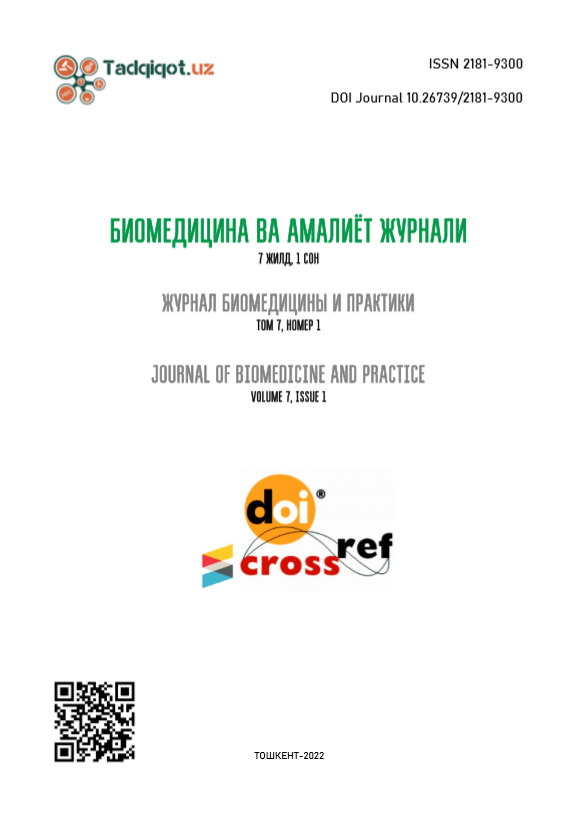FORENSIC ASSESSMENT OF THE AGE OF INTRACRANIAL HAEMATOMAS BY METHAEMOGLOBIN CONCENTRATION
Keywords:
methemoglobin, intracranial hematoma, spectrophotometry, craniocerebral traumaAbstract
Objective: Forensic medical assessment of the age of intracranial hematomas according to the concentration of methemoglobin
Material and Methods. We studied 77 cases of traumatic brain injury with intracranial hemorrhages. Among them, 52 were males and 25 females. The age category of the deceased ranged from 20 to 65 years. The study used the spectrophotometric method, by which the concentration of methyl hemoglobin in the intracranial hematomas was determined.
Results We performed spectrophotometric analysis of methyl hemoglobin concentration in blood from intracranial hematomas of those who died of craniocerebral injuries. Blood from the superior sagittal sinus of the dura mater was used as a control.
The spectrophotometric results obtained from the difference in MetHb concentrations from the intracranial hemorrhages and the control blood group at different times of traumatic brain injury were evaluated. The results obtained were compared MetHb concentrations between the observation groups according to the life expectancy of the victims after injury. All cases were divided into 7 groups according to periods of posttraumatic hematoma development: 1) up to 3 hours; 2) up to 12 hours; 3) up to 24 hours; 4) up to 48 hours; 5) up to 60 hours; 6) up to 72 hours; and 7) over 3 days.
Conclusions: Thus, in practice we have proved that the concentration of methemoglobin changes in the blood in various pathological states, as well as there is a direct correlation between the content of MetHb in the blood coagulation in case of CHT and the time of the organism after trauma. Determination of the age of intracranial hematomas by spectrophotometric method is of great importance for the resolution of many problems in the field of medicine.
References
Anttila J.E., Whitaker K.W., Wires E.S., Harvey B.K., Airavaara M. Role of microglia in ischemic focal stroke and recovery: focus on toll-like receptors.//Prog. Neuropsychopharmacol. Biol. Psychiatry. - 2016. - №79(Pt A), - Р.3–14.
Brites D., Vaz, A.R. Microglia centered pathogenesis in ALS: insights in cell interconnectivity.// Front. Cell. Neurosci. - 2014. №8. – Р.117.
Colonna M., Butovsky O. Microglia function in the central nervous system during health and neurodegeneration. // Annu. Rev. Immunol. - 2017. - №35 – Р. 441–468.
Cooke R.A., Stewart B. Colour Atlas of Anatomical Pathology. – Churchill Livingstone. – 2004. – 300 p.
Ilkhomovna, K. M., Eriyigitovich, I. S., &Kadyrovich, K. N. (2020). Morphological Features Of Microvascular Tissue Of The Brain At Hemorrhagic Stroke. The American Journal of Medical Sciences and Pharmaceutical Research, 2(10), 53-59.
Kamalova M. I., Islamov Sh. E., Khaydarov N.K.// morphological changes in brain vessels in ischemic stroke. Journal of Biomedicine and Practice 2020, vol. 6, issue 5, pp.280-284
Khaidarov Nodir Kadyrovich, Shomurodov Kahramon Erkinovich, & Kamalova Malika Ilhomovna. (2021). Microscopic Examination Of Postcapillary Cerebral Venues In Hemorrhagic Stroke. The American Journal of Medical Sciences and Pharmaceutical Research, 3(08), 69–73.
Kamalova Мalika Ilkhomovna, Islamov Shavkat Eriyigitovich, Khaidarov Nodir Kadyrovich. Morphological Features Of Microvascular Tissue Of The Brain At Hemorrhagic Stroke. The American Journal of Medical Sciences and Pharmaceutical Research, 2020. 2(10), 53-59

